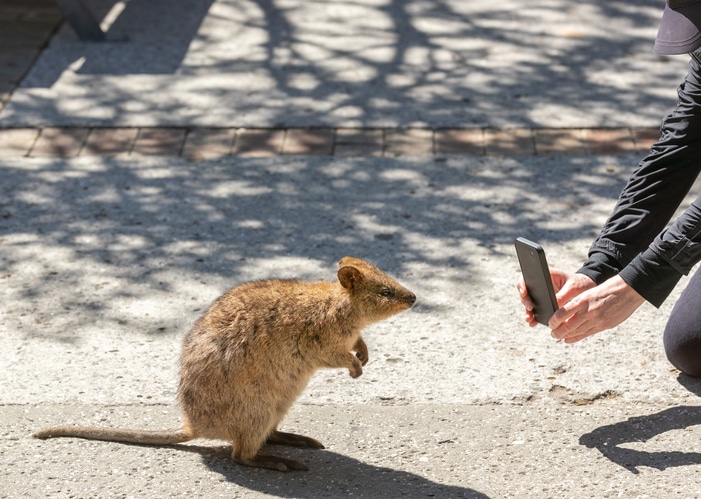
Tourists’ Vacation Photos Can Help Researchers Track Endangered Species

Taking photos while whale watching or snapping an image of a zebra in the wild and sharing it on social media is a pastime for many tourists, but in addition to bringing joy to friends and family, these photos can help with the information databases of scientists tracking threatened and endangered species.
Researchers have begun using artificial intelligence (AI) — particularly a system called Wildbook — in their analysis of photos of many species taken by researchers, as well as images taken by vacationers shared publicly on social media, The Science Times reported.
For environmentalists, one of the most difficult obstacles to keeping track of the status of threatened and endangered species is the lack of available data.
“We’re losing biodiversity at an unprecedented rate and we don’t even know how much and what we’re losing,” said director of the Translational Data Analytics Institute at The Ohio State University Tanya Berger-Wolf, as The Ohio State University reported.
Created by Berger-Wolf and her colleagues, Wildbook can identify individual animals of a species by analyzing images using computer algorithms.
“Our AI algorithms can identify individuals using anything striped, spotted, wrinkled or notched – even the shape of a whale’s fluke or the dorsal fin of a dolphin,” said Berger-Wolf, as reported by The Ohio State University.
Wildbook currently has more than two million images of 60,000 individual dolphins and whales.
Berger-Wolf said images contained in Wildbook are their main source of data on killer whales.
“We have millions of images of endangered and threatened animals taken by scientists, camera traps, drones and even tourists,” Berger-Wolf said, as The Ohio State University reported.
“Those images contain a wealth of data that we can extract and analyze to help protect animals and combat extinction,” said Berger-Wolf.
According to Berger-Wolf, extracting animals’ biological information from images taken of wildlife using AI is called “imageomics.”
The status of more than half of the over 142,000 species listed on the IUCN Red List of Threatened Species is not known due to a lack of data or uncertainty as to whether their population numbers are increasing or decreasing.
African elephants are one example of a species whose population has dropped severely due to destruction of habitat and poaching, and keeping track of their numbers is vastly important to their survival.
“Accurate monitoring is essential if we’re to save the species,” said computer scientist at the UK’s University of Bath Dr. Olga Isupova, according to a University of Bath press release concerning the use of satellite imagery aided by computer algorithms in surveys of endangered wildlife. “We need to know where the animals are and how many there are.”
Keeping track of the population numbers and locations of the elephants using collars and tags isn’t nearly as accurate or even feasible as using imageomics.
“We don’t have enough GPS collars and satellite tags to monitor all the elephants and answer those questions,” said Berger-Wolf, according to The Ohio State University. “But we can use AI techniques such as machine learning to analyze images of elephants to provide much of the information we need.”
Wildbooks exist for many species, including turtles, giraffes and sharks.
Berger-Wolf said that many photos people take while on vacation and share publicly on social media can appear in Wildbook and provide important information such as the species’ social interactions and range, The Ohio State University reported.
“We’re teaching machines to see things in images that humans may have missed or can’t see,” Berger-Wolf added, as reported by The Ohio State University.
An important consideration with the continued use of AI is that the information it gathers doesn’t fall into the hands of poachers and that researchers use the data collaboratively.
“We have to make sure that it is a human-machine partnership in which humans trust the AI. The AI should, by design, be participatory, connecting among the people, among the data and among the geographical locations,” said Berger-Wolf, as The Ohio State University reported.


 233k
233k  41k
41k  Subscribe
Subscribe 